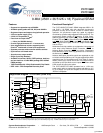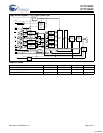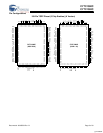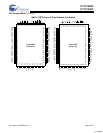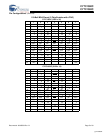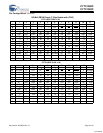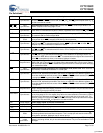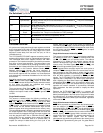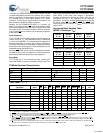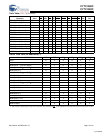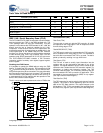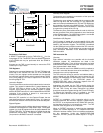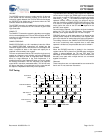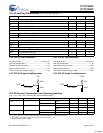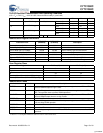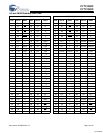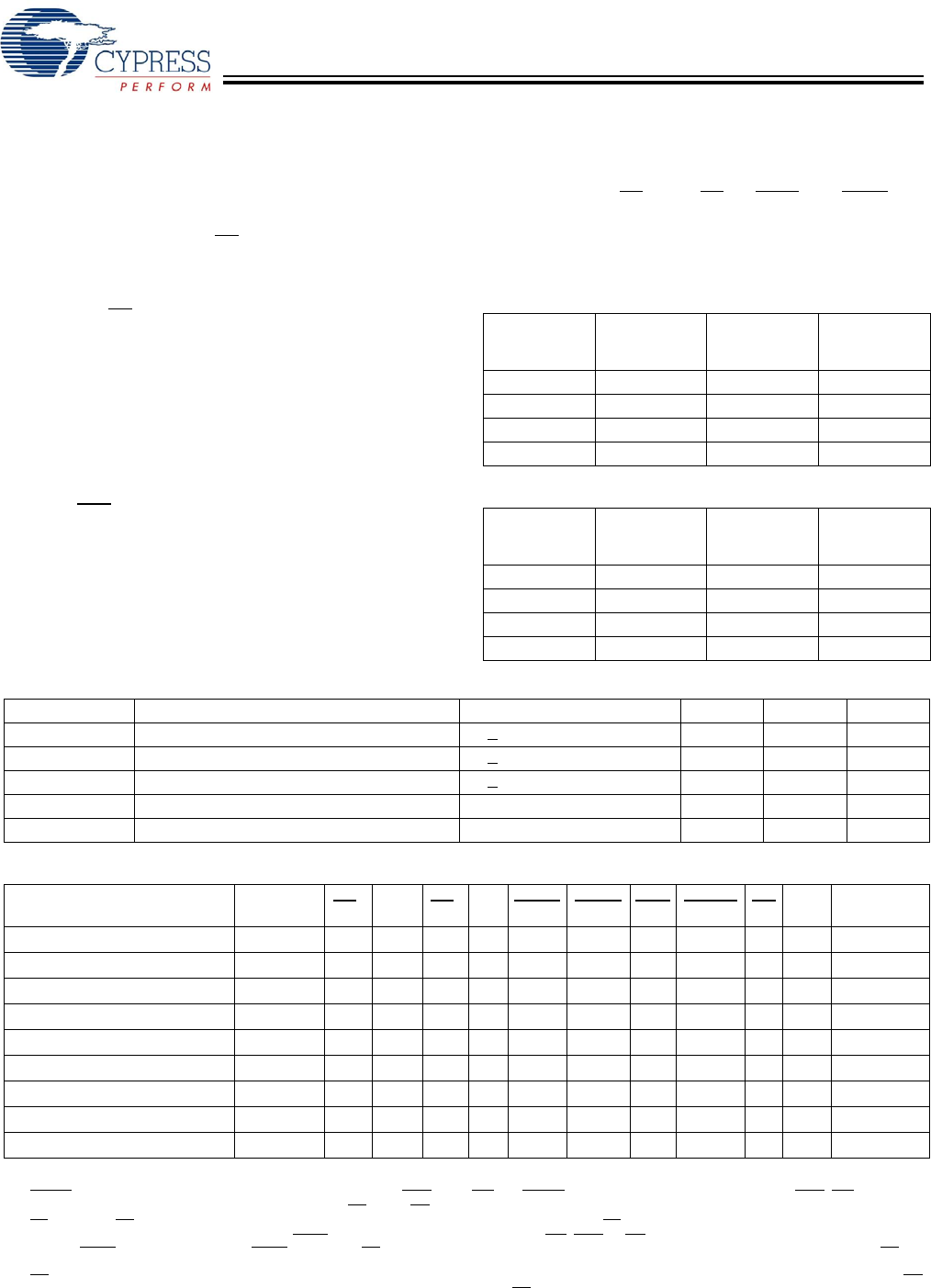
CY7C1360C
CY7C1362C
Document #: 38-05540 Rev. *H Page 9 of 31
conducted, the data presented to the DQs is written into the
corresponding address location in the memory core. If a Byte
Write is conducted, only the selected bytes are written. Bytes
not selected during a Byte Write operation will remain
unaltered. A synchronous self-timed Write mechanism has
been provided to simplify the Write operations.
Because the CY7C1360C/CY7C1362C is a common I/O
device, the Output Enable (OE) must be deasserted HIGH
before presenting data to the DQs inputs. Doing so will tri-state
the output drivers. As a safety precaution, DQs are automati-
cally tri-stated whenever a Write cycle is detected, regardless
of the state of OE
.
Burst Sequences
The CY7C1360C/CY7C1362C provides a two-bit wraparound
counter, fed by A
1
, A
0
, that implements either an interleaved
or linear burst sequence. The interleaved burst sequence is
designed specifically to support Intel Pentium applications.
The linear burst sequence is designed to support processors
that follow a linear burst sequence. The burst sequence is user
selectable through the MODE input.
Asserting ADV
LOW at clock rise will automatically increment
the burst counter to the next address in the burst sequence.
Both Read and Write burst operations are supported.
Sleep Mode
The ZZ input pin is an asynchronous input. Asserting ZZ
places the SRAM in a power conservation “sleep” mode. Two
clock cycles are required to enter into or exit from this “sleep”
mode. While in this mode, data integrity is guaranteed.
Accesses pending when entering the “sleep” mode are not
considered valid nor is the completion of the operation
guaranteed. The device must be deselected prior to entering
the “sleep” mode. CE
1
, CE
2
, CE
3
[2]
, ADSP, and ADSC must
remain inactive for the duration of t
ZZREC
after the ZZ input
returns LOW.
Interleaved Burst Address Table
(MODE = Floating or V
DD
)
First
Address
A
1
, A
0
Second
Address
A
1
, A
0
Third
Address
A
1
, A
0
Fourth
Address
A
1
, A
0
00 01 10 11
01 00 11 10
10 11 00 01
11 10 01 00
Linear Burst Address Table (MODE = GND)
First
Address
A
1
, A
0
Second
Address
A
1
, A
0
Third
Address
A
1
, A
0
Fourth
Address
A
1
, A
0
00 01 10 11
01 10 11 00
10 11 00 01
11 00 01 10
ZZ Mode Electrical Characteristics
Parameter Description Test Conditions Min. Max. Unit
I
DDZZ
Sleep mode standby current ZZ > V
DD
– 0.2V 50 mA
t
ZZS
Device operation to ZZ ZZ > V
DD
– 0.2V 2t
CYC
ns
t
ZZREC
ZZ recovery time ZZ < 0.2V 2t
CYC
ns
t
ZZI
ZZ Active to sleep current This parameter is sampled 2t
CYC
ns
t
RZZI
ZZ Inactive to exit sleep current This parameter is sampled 0 ns
Truth Table
[3, 4, 5, 6, 7, 8]
Operation
Address
Used CE
1
CE
2
CE
3
ZZ ADSP ADSC ADV WRITE OE CLK DQ
Deselect Cycle, Power Down None H X X L X L X X X L-H Tri-State
Deselect Cycle, Power Down None L L X L L X X X X L-H Tri-State
Deselect Cycle, Power Down None L X H L L X X X X L-H Tri-State
Deselect Cycle, Power Down None L L X L H L X X X L-H Tri-State
Deselect Cycle, Power Down None L X H L H L X X X L-H Tri-State
Sleep Mode, Power Down None X X X H X X X X X X Tri-State
READ Cycle, Begin Burst External L H L L L X X X L L-H Q
READ Cycle, Begin Burst External L H L L L X X X H L-H Tri-State
WRITE Cycle, Begin Burst External L H L L H L X L X L-H D
Notes:
3. X = “Don't Care.” H = Logic HIGH, L = Logic LOW.
4. WRITE
= L when any one or more Byte Write Enable signals and BWE = L or GW = L. WRITE = H when all Byte Write Enable signals, BWE, GW = H.
5. The DQ pins are controlled by the current cycle and the OE
signal. OE is asynchronous and is not sampled with the clock.
6. CE
1
, CE
2
, and CE
3
are available only in the TQFP package. BGA package has only two chip selects CE
1
and CE
2
.
7. The SRAM always initiates a read cycle when ADSP
is asserted, regardless of the state of GW, BWE, or BW
X
. Writes may occur only on subsequent clocks
after the ADSP
or with the assertion of ADSC. As a result, OE must be driven HIGH prior to the start of the Write cycle to allow the outputs to tri-state. OE is a
don't care for the remainder of the Write cycle.
8. OE
is asynchronous and is not sampled with the clock rise. It is masked internally during Write cycles. During a Read cycle all data bits are Tri-State when OE
is inactive or when the device is deselected, and all data bits behave as output when OE
is active (LOW).
[+] Feedback



